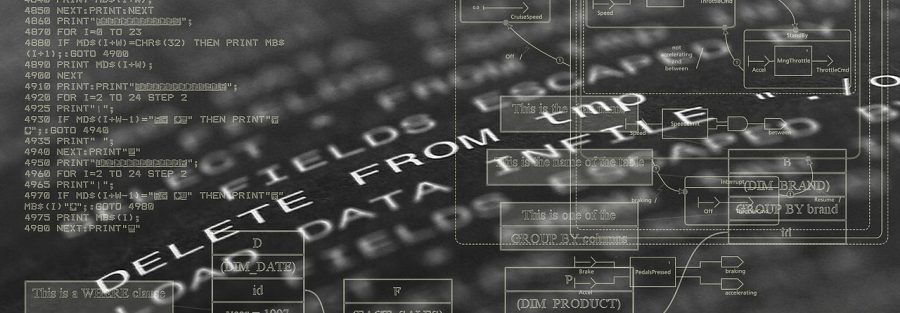Understanding Cultural Differences in Software Localization
Localization is a crucial process when adapting software for different cultures. It involves not only translating the text, but also ensuring that the entire user experience is culturally appropriate. Cultural differences can vary greatly, from social norms and practices to values and beliefs. For software localization to be successful, careful attention must be given to these differences.
One important aspect to consider is the use of colors and symbols. What may be considered positive or neutral in one culture could be seen as negative or offensive in another. For example, the color red is often associated with luck and prosperity in Chinese culture, while in Western cultures it can symbolize danger or caution. Similarly, symbols like thumbs up or OK gestures may hold different meanings across different societies. Therefore, it is essential to thoroughly research and understand the cultural significance of such elements before incorporating them into localized software.
Language and Context Adaptation in Software Localization
Language and context adaptation is a crucial aspect of software localization. When translating an application or software into a different language, it is essential to consider cultural nuances and adapt the content accordingly. This involves not only translating the words but also ensuring that the message and meaning are accurately conveyed in the target language.
One challenge in language and context adaptation is capturing the right tone and style. Different languages have their own set of expressions, idioms, and cultural references that may not have direct equivalents in other languages. It is important for localization teams to work closely with native speakers of the target language to ensure that the translated content is culturally appropriate and resonates with the target audience. Adapting the language and context in software localization requires meticulous attention to detail to ensure that the software feels natural and familiar to its users, regardless of their language and cultural background.
Dealing with Technical Limitations in Software Localization
Software localization can be a complex process, often involving the adaptation of a program to different languages, cultures, and technical environments. One major challenge that localization teams face is dealing with technical limitations. These limitations can arise from various factors such as the programming language used, the design of the software, or the compatibility of certain features with different operating systems. In such cases, the localization team must find creative solutions to ensure that the localized version of the software functions smoothly and efficiently in the target market.
One common issue related to technical limitations in software localization is the handling of non-Latin character sets. Many languages, such as Chinese, Japanese, or Arabic, have writing systems that are significantly different from the Latin alphabet. This poses a challenge when the original software was designed with only Latin character sets in mind. To overcome this limitation, localization teams need to work closely with developers to implement proper character encoding and rendering techniques. This ensures that the localized version of the software displays text correctly and in a visually appealing manner, regardless of the language or character set used.
Quality Assurance and Testing in Software Localization
Quality assurance and testing play a crucial role in ensuring the accuracy and functionality of software localization. One of the key aspects of quality assurance is linguistic testing, which involves examining the translation and localization of the software content in different languages. This process involves checking for language accuracy, ensuring that the translated text is appropriate for the target culture, and verifying that the user interface elements are properly adapted. Linguistic testers also pay attention to grammar, syntax, and punctuation to guarantee that the software meets the linguistic standards of the localized market.
In addition to linguistic testing, functional testing is essential to ensure that the localized software performs as expected. This involves checking that all features and functionalities are properly implemented and working correctly in the localized version. Functionality testing also involves evaluating the user interface elements to verify that they are correctly aligned, visible, and functioning as intended. Moreover, compatibility testing is conducted to ensure that the localized software is compatible with different operating systems, devices, and platforms. By conducting thorough quality assurance and testing processes, software localization teams can minimize errors and provide users with a seamless and reliable localized software experience.
Addressing User Interface Challenges in Software Localization
One of the major challenges in software localization lies in effectively addressing user interface (UI) challenges. UI plays a crucial role in ensuring a seamless user experience, and when it comes to localization, it requires careful attention to detail.
A key aspect of addressing UI challenges is adapting the layout and design elements to accommodate different languages and cultural preferences. This includes adjusting the size and placement of text, icons, buttons, and other interface elements to fit the constraints of the localized content. Additionally, cultural and regional specificities must be taken into account, such as right-to-left text orientation for languages like Arabic or Hebrew. Overall, successfully addressing UI challenges in software localization requires a deep understanding of both the technical aspects and the cultural nuances involved.
Managing Time and Resource Constraints in Software Localization
To effectively manage time and resource constraints in software localization, it is crucial for organizations to adopt a structured approach and prioritize tasks accordingly. One key strategy is to establish clear timelines and deadlines for each phase of the localization process. By setting realistic and achievable targets, localization teams can ensure that projects stay on track and within budget.
Additionally, resource allocation plays a crucial role in managing time and resource constraints. It is essential to have a skilled and efficient team of translators, project managers, and localization engineers who can effectively handle the workload. By properly assessing the requirements of each project and allocating resources accordingly, organizations can optimize productivity and minimize time wastage. Regular communication and coordination between team members is also of utmost importance to ensure smooth workflow and timely completion of tasks.
Overcoming Compatibility Issues in Software Localization
Software localization is a complex process that involves adapting software products to meet the cultural, linguistic, and technical requirements of target markets. One common challenge that localization teams often face is compatibility issues between different software platforms. These compatibility issues can arise due to differences in operating systems, programming languages, or hardware configurations.
To overcome compatibility issues in software localization, it is crucial for localization teams to have a deep understanding of the target market’s technology landscape. This includes knowledge of the most commonly used operating systems and devices, as well as the programming languages and frameworks that developers in the target market prefer. By conducting thorough research and staying updated on the latest technological advancements, localization teams can ensure their localized software is compatible with the target market’s technology ecosystem. Additionally, collaboration between software developers and localization teams can help identify and address compatibility issues early in the localization process, saving time and resources in the long run.
Ensuring Consistency in Terminology and Language Style in Software Localization
One of the key challenges in software localization is ensuring consistency in terminology and language style. When translating software into multiple languages, it is crucial to maintain uniformity in the terms and phrases used across all versions. This helps in providing a seamless user experience and prevents any potential confusion or misunderstanding.
To achieve consistency in terminology, localization teams often create a glossary that includes a list of approved terms and their translations in different languages. This ensures that all translators and linguists working on the project have a common reference point and use the same terminology throughout. Additionally, the use of style guides can help in maintaining consistency in language style. These guides outline the preferred writing style, grammar rules, and punctuation conventions for the localized software, ensuring that the translated content aligns with the overall tone and voice of the original application. Overall, ensuring consistency in terminology and language style is crucial for effective software localization and contributes to a cohesive and professional user experience.
Bridging the Gap between Developers and Localization Teams
Developing software that can be easily and effectively localized for different cultures and languages requires close collaboration between developers and localization teams. Bridging the gap between these two groups is crucial to ensure smooth and successful software localization projects.
One key aspect of bridging this gap is establishing effective communication channels and fostering a collaborative mindset. Developers and localization teams should understand each other’s perspectives and work together to identify any potential issues or challenges early on in the process. Regular meetings and discussions, both in person and via other communication tools, can help facilitate this collaboration. This enables developers to gain a deeper understanding of localization requirements and constraints, while localization teams can provide valuable feedback and insights on cultural nuances and language adaptations. By establishing open lines of communication, developers and localization teams can work together to find efficient and effective solutions, ensuring that the final localized software meets the needs and expectations of the target audience.
Best Practices for Successful Software Localization
Software localization is a complex process that requires careful consideration and planning to ensure its success. One of the best practices for successful software localization is to involve a dedicated localization team from the early stages of development. This team should be composed of experts in both software development and linguistics, who can work together to address any language and cultural challenges that may arise.
Another key practice is to prioritize user experience and ensure that the localized software adapts seamlessly to the target audience’s language and context. This involves not only translating the software’s text but also localizing its user interface, graphics, and any cultural references. By understanding the cultural nuances and preferences of the target audience, developers can create a more tailored and engaging user experience, ultimately enhancing the success of the localized software.



